Erythritol alone is not sweet enough and it has a weird cool taste. Stevia alone is hard to measure and bitter. But if you combine both in the right amounts, you get the best homemade keto 1:1 sweetener!
What is a 1:1 sweetener
Don’t bother with complicated conversion charts every time you want to make a recipe! The best way of using a sweetener is as you would sugar – if you used to love baking before keto, you will do it joyfully again without worrying with conversions graphics and tables.
Imagine, to simply use the quantity of keto sugar that feels right! Or, the exact same amount of sugar asked in the original recipe. To be able to have this natural carefree approach when low-carb and keto baking, you absolutely need to use a 1:1 sugar replacement. This is a sweetener that has the same level of sweetness as sugar.
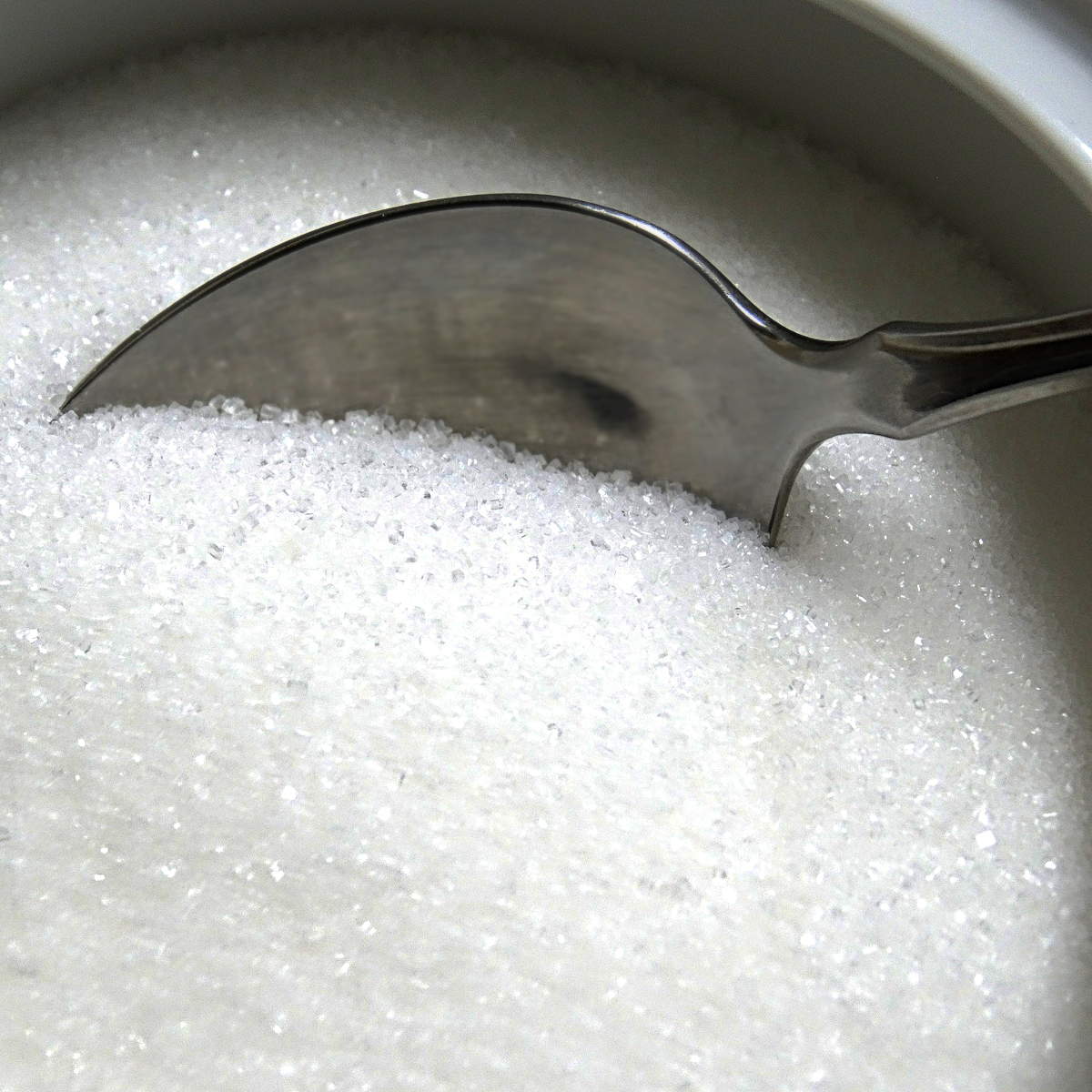
Reasons to make your own keto sugar substitute
But why, you may be asking yourself, should I make my own when there are so many options of ready blended 1:1 keto baking sweeteners available for sale? I will give you 2 reasons:
1. You can control your ingredients:
- You might prefer organic stevia, or stevia extracted without solvents
- If GMO’s are a concern for you, you can choose erythritol from non-GMO corn.
- Many brands add flavors to their sweetener blends, and although “natural flavors” are often mentioned, there is really no way of knowing exactly what they are or in which quantity they’re added.
- No bulking ingredients, like cornstarch, or extra chemicals added. Companies do sensory evaluation tests and add all sorts of unnecessary chemicals to improve texture, smell and visual acceptance by the consumers.
2. You can save a lot of money!
The branded sweeteners are generally much more expensive than buying the pure erythritol and the pure stevia versions. And if you want to buy powdered or confectioner’s erythritol, which I super recommend for anything that’s not dissolving it in a liquid straight away, you’d have to shell out even more cash.
Why erythritol is the best keto sugar substitute
Erythritol is a magical keto sugar: it’s a sugar alcohol that you don’t need to count the carbs for. Erythritol net carbs = ZERO
Really. Not one single carb from erythritol is absorbed in your body. Erythritol is is non caloric, non glycemic, and non insulinemic – it does not provoke an insulin response. When counting macros or calories, you can just ignore the amount of erythritol that you add to the recipe. Count it as you would water!
But even with all these qualities, erythritol by itself is not perfect. The cons of pure erythritol are:
- Less than sugar sweetness, making it difficult to measure and convert, specially in baking;
- Difficult dissolution and strong crystallization, leading to a grainy and crunchy texture;
- Cooling mouthfeel, resembling mint taste;
- Lack of caramelization abilities.
Read on, and you’ll find out how to fix most of these problems, and how to make your erythritol exactly as sweet sugar!
Why powdered erythritol is better
You can buy erythritol in granulated or powder form, called confectioner’s erythritol. The granulated form is by far the easiest to find, and it generally costs less, too.
When used in most recipes that are baked or cooked, mixed with other flours and powders, you won’t even notice erythritol’s crystals. But it is really hard to ignore it if added to recipes in which erythritol is the only solid ingredient in an otherwise smooth textured recipe: creams and custards, homemade chocolate, frostings.
Xylitol is another sugar alcohol that performs much better if you want a creamy smooth result, as it dissolves completely. But xylitol doesn’t come for free in your macro count as erythritol does (it has a GI of 13 and 2.4 kcal/gram), and you have to be really careful if you have pets in the house as xylitol is extremely toxic to them.
For these reasons, I will still use erythritol in most of my cream recipes. I just powder the erythritol granules first, and it gets thin enough that I can’t perceive the texture. But powdering it won’t work if the recipe has not enough liquid content to dissolve the erythritol, such as homemade chocolate. In this case, you are better off with xylitol or allulose, as erythritol does not dissolve in fat and is going to be very noticeable, even if powdered.
There’s also a problem with crystallization, which derives from the same difficulty erythritol has in dissolving. The baked item your prepared is going to keep its properties on day one and maybe even day 2, but by day 3 you’ll most likely start perceiving some crunchiness: yes, erythritol is persistent. Even after dissolved, it will start getting grainy again as the liquids around it start drying out. It’s not as noticeable in recipes that take a lot of liquid, such as cheesecakes, but it’s hard to ignore in cakes and cookies, for example.
There’s no fix for it, unfortunately. Using less erythritol helps, that’s why making it sweeter via addition of stevia is a great idea. And making it powdered gives you smaller crystals, which makes the crunchiness less… crunchy. But on the bright side… if you like crunchy cookies, erythritol is king!
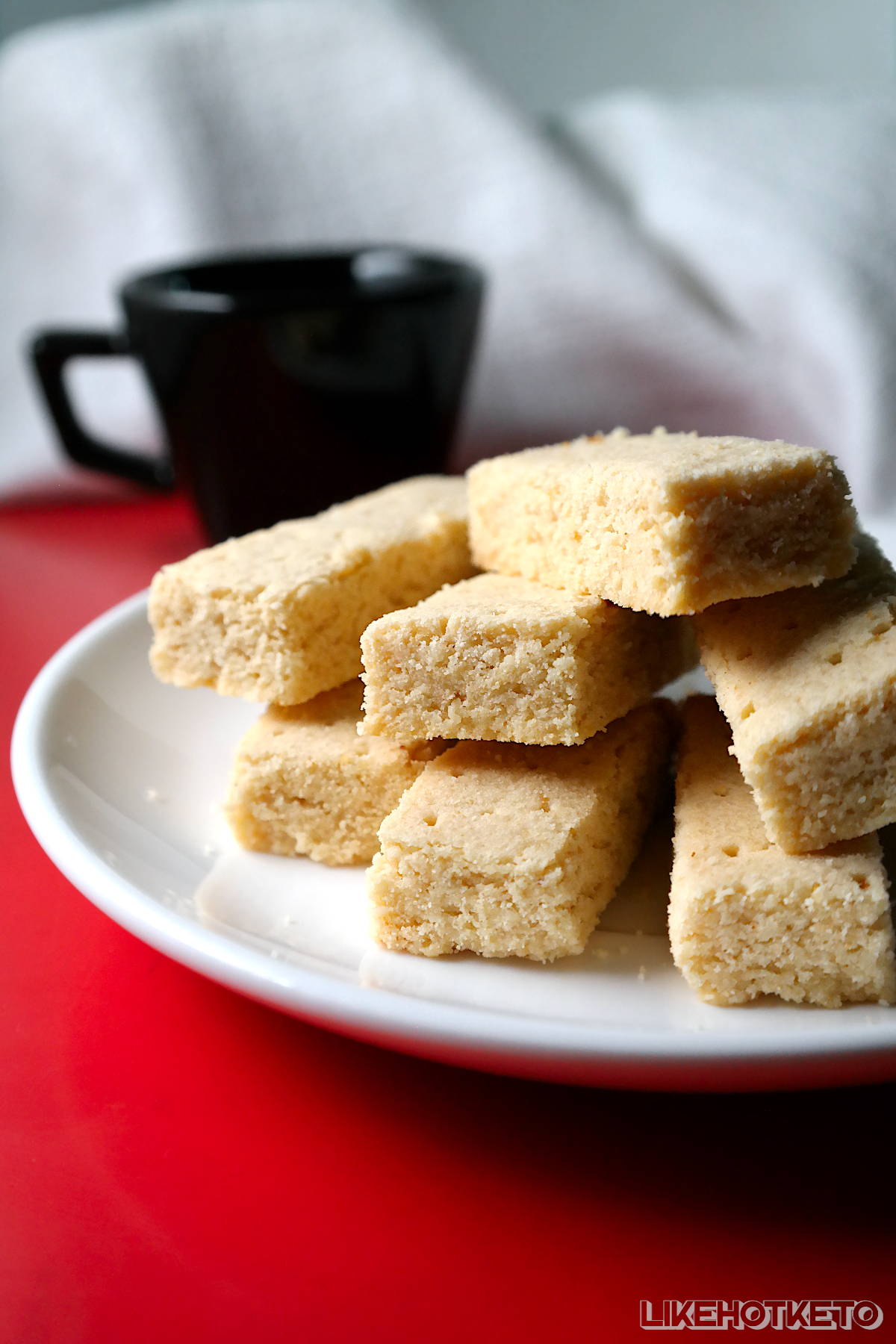
Having this problem solved, as well as nature allows us, we come to another one that needs addressing:
How to make erythritol sweeter
As the sweetener industry have already discovered, erythritol is very good, but it is just not sweet enough, in the sense that it is not as sweet as sugar is. For use in baking, specially you you are converting recipes originally made with sugar, this difference can throw your proportions out of whack.
Erythritol, in its pure form, is only about 70 per cent as sweet as sugar. If you taste it by itself, you’ll find that it is not so sweet. And if you just add pure erythritol to a baking recipe, trying to substitute it in a straight conversion for the same amount of sugar, you’ll end up with a much less sweet result than you would expect.
If you like to sweeten your beverages, and recently changed from plain sugar to a sweetener, it would make it for an easier adaptation if you would continue getting the same expected sweetness from the one or two teaspoons of white powder as you used to before. But if you use pure erythritol, you’ll always have the feeling that things are not as sweet as they are supposed to be.
The obvious solution, increasing the amount of erythritol by about 30 per cent, doesn’t help. It would make sense, I know. But the sweet taste feels different than that of sugar. Let’s not fool ourselves, sugar is addicting for a very good reason.
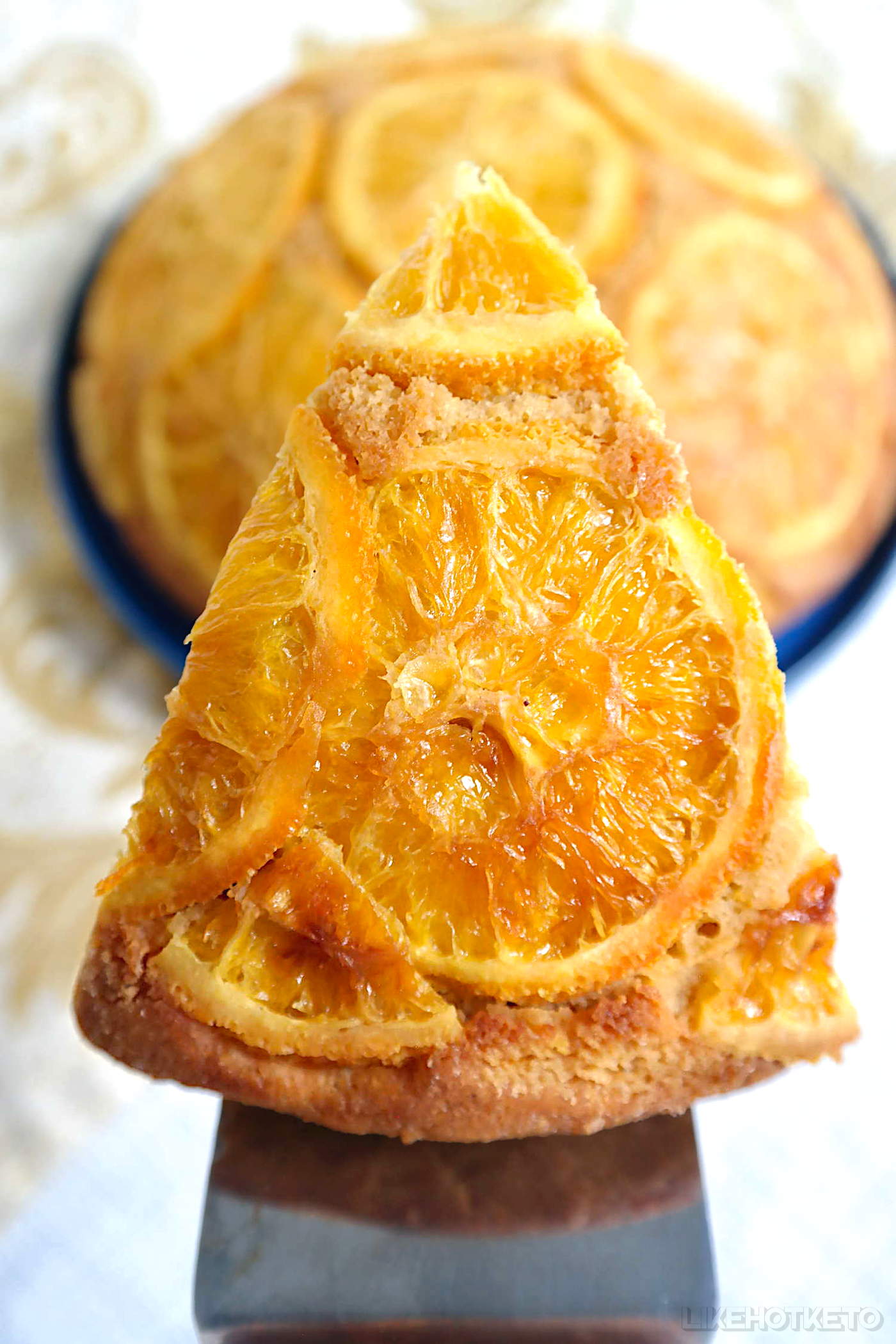
Increasing the amount of erythritol might increase its cooling effect, which is not pleasant. If you’ve never felt it, experiment putting some pure erythritol in your mouth. There’s a minty, cool feeling that is really out of place in most foods, except, well, mint flavored ones.
The solution for this conundrum is adding a tiny amount of an ultra-concentrated strong sweetener, like stevia or monk fruit pure powder, and blend it with the erythritol. This will increase the overall sweetness so that you can use it at an equal, 1:1 conversion to sugar, without having to put more erythritol, which would result in the cooling taste.
Why not use pure stevia in baking?
Pure stevia is 250-400 times sweeter than sugar, depending on the steviosides used in the extract formulation. It is so concentrated that it makes it difficult, or near impossible, to use the right quantity. Just a tip of a teaspoon is a lot sweeter than a heaping tablespoon of sugar. You can easily ruin your beverage, or recipe, with miscalculated stevia. Even the industries can get stevia mixes wrong: I have thrown away a package of flavored stevia sweetener because it would make things bitter when added to them, not sweeter.
Parallel to its excessive sweetness, stevia has this peculiar characteristic of adding a strong bitter aftertaste, which depends not only in the type of stevia, but on personal sensibilities as well. If you don’t like the taste of licorice – I can’t stand it, myself – then you will probably feel it more.
The best is to combine them, adding a little bit of stevia to increase the sweeteness of the erythritol, so that you don’t use so much erythritol to get the cold sensation and not so much stevia to get the bitter aftertaste – but just enough of each that you will get the same level of sweeteness as sugar and be able to substitute in recipes, and your beverages, in a one per one proportion. Problems solved!
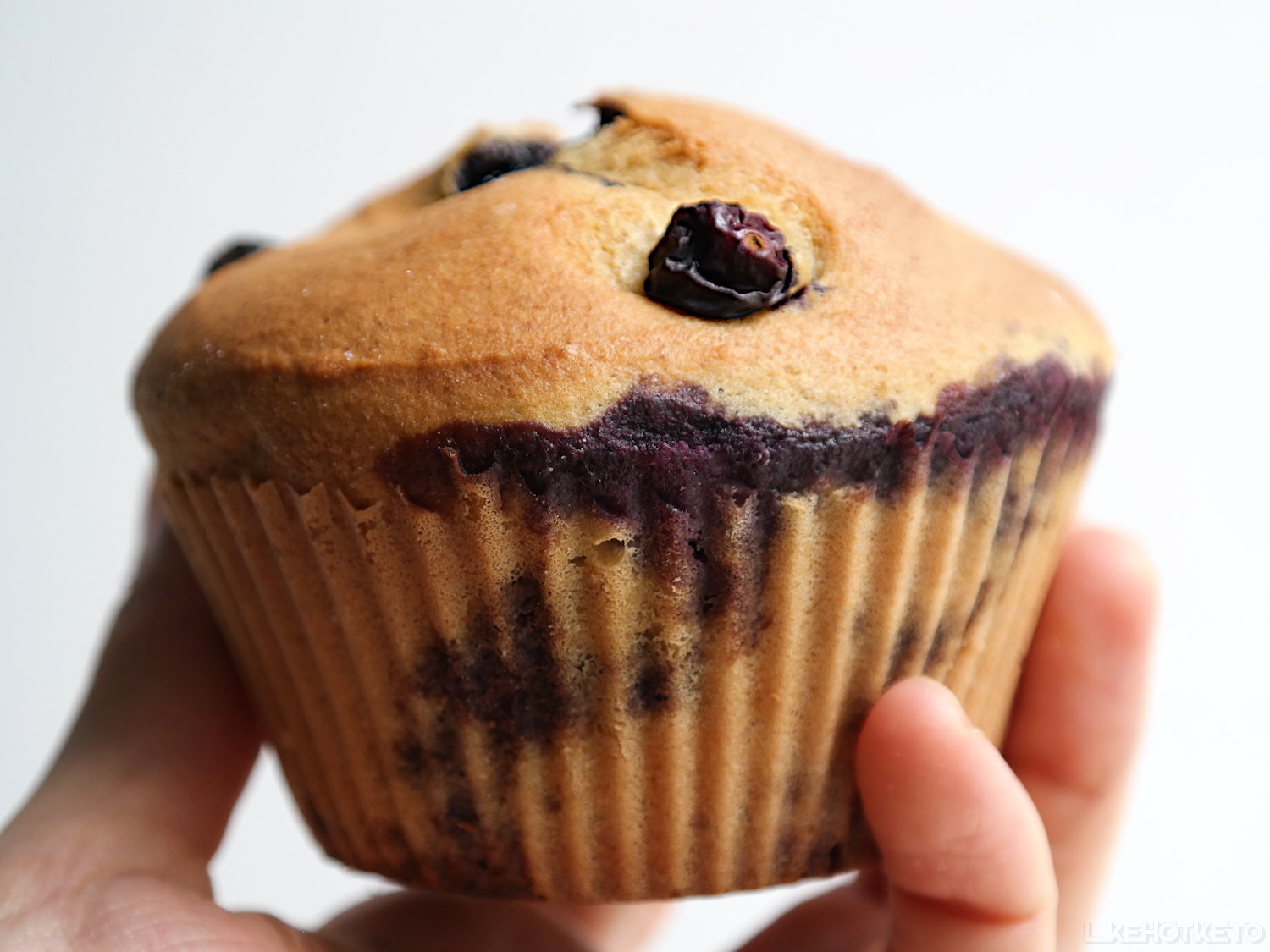
The best ratio of stevia to erythritol for a 1:1 keto sweetener
The sugar substitute companies are very protective of their formulations. It’s understandable, as people can give preference to a sweetener over another and become faithful to a brand.
I tried to check on different company websites (Like Pyure and Truvia, for example), but they do not disclose the proportions, in percentages, of the exact amout of stevia to erythritol used. In Pyure’s website it actually reads “Due to the proprietary nature of our products, we unfortunately cannot disclose exact percentages”. Similar to how perfume manufacturer’s don’t list all the poison chemicals on their packages.
But science came to the rescue! A group of Brazilian food scientists trying to find the ideal ratio of stevia to erythritol to be industrialized wrote a paper with their findings. They tried 3 different proportions of stevia and erythritol and made questionnaires to determine consumer’s preferences.
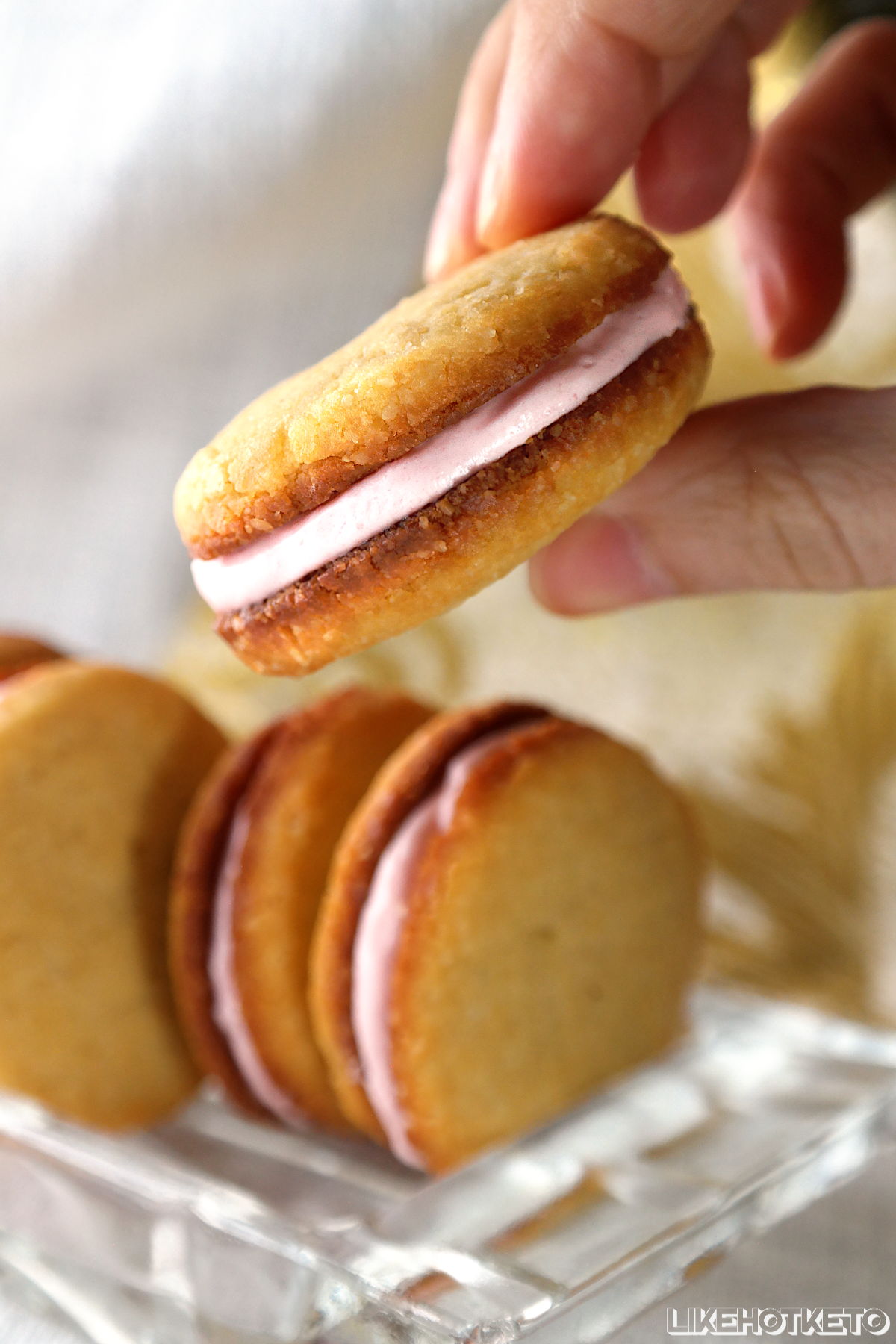
In the study’s taste experiment, they added 0.6 grams of their stevia erythritol mix in the different variations to a 50 ml cup of coffee. With this amount, they were obviously not trying to make a sugar substitute, but trying to approximate the sweeteners that come in packages with a little powder, as a dose.
Considering that a dose should equal a teaspoon of sugar – which I’ll round up to 5 grams, the amount people who sweeten 50 ml of coffee most likely use, and the amount used for each coffee was approximately 10 times less (rounding from 0.6 to 0.5 grams), we can extrapolate that they made their sweetener 10 times more sweet than sugar, at a ratio of 10% stevia to 90 % erythritol (I’m rounding up these too, but it’s close enough and easier math).
To make our keto baking sweetener as sweet as sugar, we then need to use stevia in a proportion 10 times smaller than the one used in the study. So, for keto baking sweetener that tastes exactly like sugar, we’ll add stevia to erythritol at a 1% of the amount: i.e., 1 gram of stevia to 99 grams of erythritol. I do 100, because I like round numbers and can’t really tell the taste difference 🤷♀️
How to measure erythritol and stevia for DIY sweetener blend
Let’s make it easy: Most likely the pure stevia powder you bought came with a teeny tiny spoon inside. These stevia scoops are actually 1/32th teaspoons. In my pure organic stevia extract package (which comes with the tiny spoon), it says that one serving size, a one level scoop, is 45 mg. So let’s round that to 0.5 gram of stevia.
I used the smallest measuring spoon I have, the 1/8th teaspoon, and put between 4 and 5 of the micro stevia scoop inside until level. I had to do this because unfortunately neither of my kitchen scales, not even the really precise one, caught to the measurement. And I wanted to give you a teaspoon measurement on top of the percentage one, to make life easier.
- 5 grams of erythritol – add 0.05 gram of stevia – or 1/32 teaspoon, most likely the size of your stevia scoop.
- 50 grams of erythritol – add 0.5 gram of stevia – or 1/4 teaspoon of stevia
- 100 grams of erythritol – add 1 gram of stevia – or 1/2 teaspoon of stevia
(5 grams rounded up from 4.95 grams, 50 grams rounded up from 49.5 grams, and 100 grams rounded up from 99 grams. To satisfy my husband the math police out there.)
And so forth.
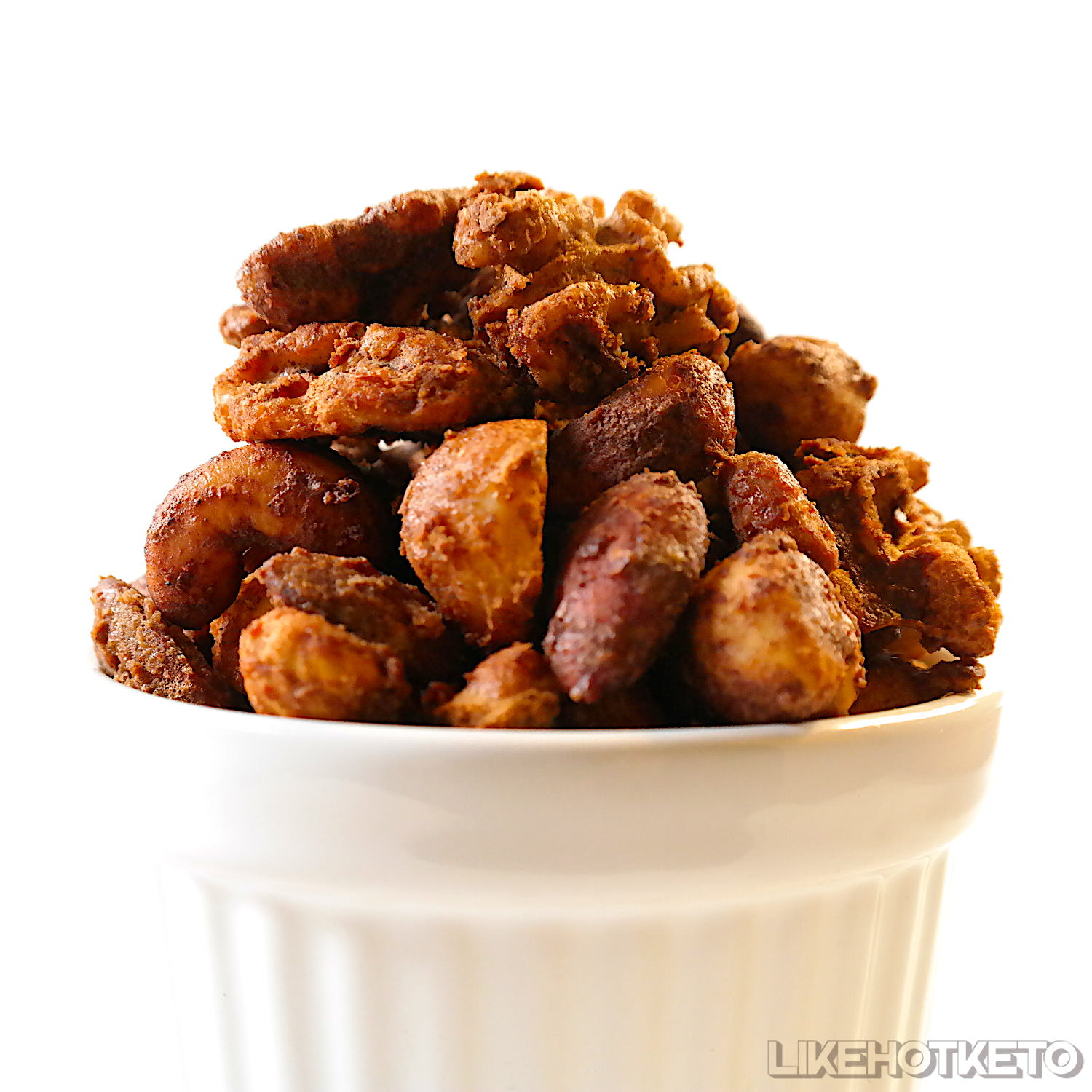
How to make granulated erythritol and stevia blend
It’s a simple matter, it just takes some elbow grease. Just put the amount you need of each erythritol and stevia in the correct proportions in a jar and shake them – a lot – until combined. That’s it. You’ll need a jar that has enough empty space for sweeteners to combine well when shaking, though. I’d say, two thirds full is good enough.
Now you can put your homemade sweetener mixture in your own labeled jar, and it’s ready to use in a 1:1 proportion for sugar!
How to make powdered erythritol and stevia blend
The powder form is akin to confectioner’s sugar, and I personally prefer to use this version as the full size erythritol crystals are not easily dissolved and might add a sandy crunch to the finished items. If I am going to dissolve the sweetener in liquid anyway, I use the granulated form, but for almost anything else I prefer the powdered erythritol.
That’s why, for the sake of convenience, whenever I make a new batch of the keto sweetener mix I will use the opportunity to powder the erythritol as well.
Throw the erythritol and stevia in a (very dry) blender and blend them together until the erythritol turns into “confectioner’s erythritol”. Just a few seconds should be enough. I give the jar a few good shakes and blend it once more. Just to make sure the stevia is well mixed throughout.
Wait for the fine powder to settle before opening the blender jar, because you don’t want to eat sweetener though your nose. Believe me.
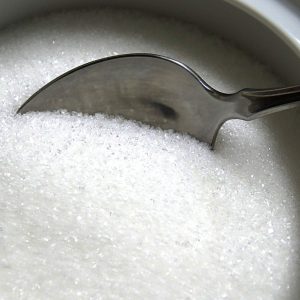
DIY Stevia Erythritol 1:1 Sugar Substitute For Keto Baking
Ingredients
- ½ cup (100 g) erythritol
- ½ teaspoon stevia
Instructions
Granulated sweetener blend
- Add the erythritol and stevia to a jar, up to two thirds full, and close the jar lid.
- Shake the jar very well for a whole minute. Done!
Powdered sweetener blend
- Add the erythritol and stevia to dry blender jar, and make sure to close the lid tightly.
- Blend for a few seconds, until the erythritol becomes powder. Shake the jar, and blend for a couple more seconds, to ensure stevia is mixed throughout.
- Wait until the powder settles before opening the jar.
Notes
- 50 grams erythritol: divided by 100 = 0.5 – add 0.5 gram of stevia (1/4 teaspoon)
- 400 grams erythritol: divided by 100 = 4 – add 4 grams of stevia (2 teaspoons)
Nutrition
Copyright Pris Frank for LikeHotKeto. Please DO NOT SCREENSHOT OR COPY/PASTE recipes to social media or websites. We’d LOVE for you to share a link to this recipe instead 🙂 Try the easy sharing buttons below!
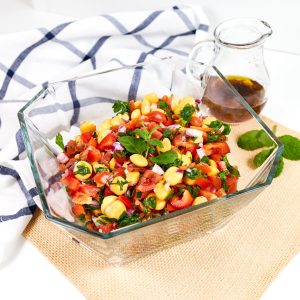
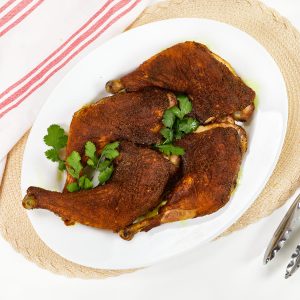
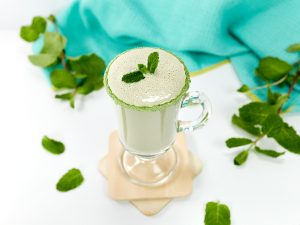
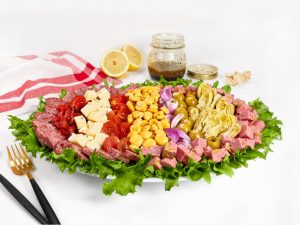
Very nice article! I’m gonna try it this week for making brownie… I used to cook with a branded sweetener that is a blend of erythritol, stevia and corn fiber (I think the latter to give some consistency similar to sugar)… I am going to try adding some fiber (coconut?) to your homemade keto recipe in order to find the right proportion for baking… Or do you think the consistency of cakes with your blend is the same of cakes with sugar?
Thanks a lot for your tips! You’re a lifesaver!! 🙂
Hi Rocky, this is Pris 🙂 You are correct, granulated (crystal) erythritol + powdered stevia, shake them together. You’ll make erythritol as sweet as sugar! You can use powdered erythritol too, if you want it finer, or make it so yourself by blending the crystal erythritol and the stevia together just for a couple of seconds, instead of manually shaking.
You could totally use monk fruit instead of stevia for your blend, or even add half of each (i.e. 1/2 cup of erythritol and 1/4 tsp of monk fruit and 1/4 tsp of stevia, instead of just 1/2 tsp stevia). Pure powdered monk fruit extract is at least as sweet as stevia extract, or even more. It varies from brand to brand, but it’s REALLY sweet! So I’d say it’s probably okay to use the same amount as you would of stevia, but you might want just a tad less. Try it after shaking and see how you like, and you can always add more of the erythritol if it gets too sweet, or of the concentrated extracts if not sweet enough 😉
Hi Daniel
Really found your article interesting and I’m planning to make my own sweetener shortly. Just so I understand, the ingredients the Erythritol you recommend is Crystal form and the Stevia is Powdered? Hence the need to shake both together?
Any recipe for Mixing Erythritol, Stevia and Monk Fruit?
Thank, keep up the good work, I’ll be following along!
Rocky
Way to go, Nancy! I’m happy to hear that you are able to use erythritol without any consequences. It just goes to show that erythritol is really a much better option for sweetener than some fake sugar alternatives!
Hi Nancy! Unfortunately, I don’t think it’s possible to make this keto sweetener recipe using liquid stevia. If the idea is to mix liquid stevia with powdered or granulated erythritol, the erythritol will get humid and clump, and it might even solidify in parts. Also, I believe it’s going to be very difficult to thoroughly mix both together. It’s not going to become a “one thing”, like it’s the idea behind the recipe – to be a substitute for the more expensive keto sweeteners that are equal equivalents to sugar, cup for cup. What I can suggest for you, if you want to use liquid stevia in recipes – specially in things that take chocolate, like your hot cocoa (because stevia can get bitter mixed in chocolate) is to add the extra stevia to increase the sweetness after you put the erythritol in. For example, you make a cake batter. If using pure erythritol (not the sugar equivalent ones, like Lakanto or Swerve) then add in the stevia drops until it’s sweet enough. The stevia liquid sweeteners are not as sweet as pure stevia extract, and the level of sweetness also varies a lot in between brands, so just try as you go. I have added liquid stevia to make my own recipes sweeter quite a few times, as I always taste my batters. It works 🙂
About 10 yrs ago, I became sensitive to all grocery store additives. I eliminated all ‘fake’ additives/food from my diet. ie, the entire grocery store except for organic fruits, vegetables, wild fish & some organic chicken. I noticed a significant difference after a year & remarkable improvement after 1 1/2 yrs. Have not added any of it back. I also eliminated sugar & gluten. I can adapt most recipes for the gluten & cut 1/2 the sugar out of sweets (really on eat banana bread). Just recently added erythritol to my diet so I can have a little hot cocoa in the winter. So far so good.
OK, got it – but… I have liquid Stevia (Trader Joe’s, organic). How do I convert this to the above dry recipe? Its a 2 fl oz bottle & says 4 drops is a serving size, 461 servings/bottle. I’m tempted to use the 1/2 t of liquid.
Yes, Elizabeth, erythritol is really a blessing for us sugar-free bakers 🙂 I have a similar problem with xylitol, but I still use in some recipes… my excuse its that it’s good for “interior cleansing” hahaha
I have been using erythritol and stevia (one 8-ounce cup erythritol to 1 tsp stevia) as a sugar substitute in my kitchen for some time, sweetening everything from coffee to teriyaki sauce, but I was hesitant to use it in baking (although I usually add a half teaspoon or so to my sourdough spelt and rye bread). I am so glad you posted this assurance that I can in fact use it for baking! Xylitol gives me terrible digestive upset, so it’s just not an option for me. And luckily, I love a grainy texture in sweets…but I keep a coffee grinder to powder it just in case I want it to dissolve faster or I am not in such a grainy mood. lol 🙂
Great question, and thank you for the answer!
Hi, Nora! I’m sorry, but probably not. I have never seen pure stevia extract in granulated form. Generally, when you buy stevia sweeteners you have 2 types: a sweetener blend of stevia plus something (like erythritol, dextrose, maltodextrin, inulin, etc), which is often granulated, or pure stevia extract, which is powdered. I believe that if the stevia you have is granulated, it’s already a blend. Please check the ingredient list to make sure: to work for this recipe, the only ingredient listed must be stevia. If it’s 100% pure stevia with no fillers, you can use it.
Can I just do granulated erythritol and granulated stevia to make 1:1 ratio substitute for regular sugar instead of granulated erythritol and powdered stevia?
Hi Mila! Thank you for your question! I didn’t use any conversion chart for this recipe, I extrapolated the numbers used in the creation of a industrial sweetener that I found in this study here. I assumed, by the quantities, that they made it about 10x sweeter than sugar for small envelope dosage, so I made this recipe 10X less sweet than theirs. So, for 100 grams of pure erythritol, you can add 1 gram of stevia (1/2 teaspoon is about 1 gram). This would be a proportion of 1% of stevia to erythritol. I believe that, for pure monkfruit, it should be the same, as monkfruit and stevia have a similar degree of sweetness. You can mix this blend, in a smaller batch – say, 25 grams of erythritol to 1/8 teaspoon monkfruit, and do a taste test. Please let me know how it goes 🙂 I hope I could help you.
Hello:) I was wondering why you add 0,5 teaspoon stevia, because if the conversion chart is correct 1/2 tsp stevia=2 cups of sugar which is 400 grams of sugar, and if I add 100 grams of erythritol its equal to 70 gr sugar. so 101 gram of your diy sweetener= 470 gr sugar. is that correct? I’m only asking because I’m trying to make my own Lakanto sweetener and I’m totally confused how much pure monkfruit I need to add to the erythritol, so maybe if I understood how you did your sweetener I will be more successful:) Sorry for the long question.
Thanks!
Hi Esther! I use Now Organic and am very happy with it 🙂
Hi,
I would like to know which brand of stevia extract you recommend or you yourself use?
Thanks Alisha!
Thanks, Emily! Erythritol and stevia is my favorite blend for good tasting and budget conscious keto baking 👌
This post is going to help so many people.. You’ve really nailed it with the keto sweetener details.. Gotta read it completely guys, worth a read
This is such valuable information about keto sweeteners! I definitely want to start using the erythritol stevia blend in my baking!
Thank you Jovita! I’m glad it helped 🙂
Wow, this post is loaded with useful information. Super handy for every keto beginner!
Thanks Beth!
I love this keto sugar recipe! What a great idea. I can’t wait to make this!